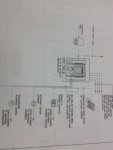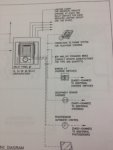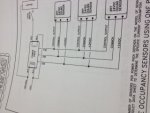Alwayslearningelec
Senior Member
- Location
- NJ
- Occupation
- Estimator
There was no clear information as to what type of system is this but I have a question. As far as I know the occ sensor gets power from a power pack, 120v in a 24v out to the occ sensor. Why would there be 4c/18 going back to the relay panel? THe guy @ Lutron say 2 #18 would go to an i/o mdule that sits on a link for the keypads etc. I am a little confused. I thought a occupancy sensor should only get the 24v via the power pack.
There whwere different manufacturers specified other than Lutron so this could work another way.
Also why woud there be a relay panel with time clock as shown to control occ sensors. Isn't this contradictory?
There whwere different manufacturers specified other than Lutron so this could work another way.
Also why woud there be a relay panel with time clock as shown to control occ sensors. Isn't this contradictory?




